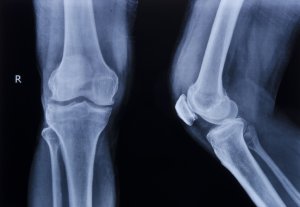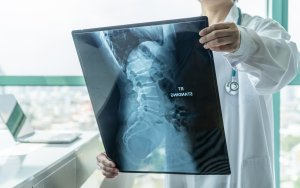
A bone fracture is one of the most common traumatic injuries in the United States. According to one study, 50% of Americans fracture a bone before they turn 65. Most of these injuries heal without any complications. But occasionally, a broken bone will have serious consequences like arthritis, blood clots, and other medical problems.
Even if you do not develop any long-term issues, a broken bone could require expensive treatment, including reconstructive surgery. You might miss work or need to change your job duties for several weeks or longer. And you will likely suffer from pain and mental anguish while you recover.
What Are the Functions and Structures of the Bones?

Bones support your body. They provide the scaffolding for your muscles and connective tissues. They also protect your organs.
Your bones have a rigid structure. This comes from minerals like calcium and phosphorus that are incorporated into the bones. When you look at bones under a microscope, you will see a matrix of bone cells — these make bones strong and light.
Your bone cells are alive, and they need a regular supply of blood to live, grow, and heal. Bone cells get this blood supply through blood vessels that run throughout the bones.
The bone marrow creates new red cells, white cells, and platelets. The blood vessels pick up these new cells to replace the old cells that get filtered from the blood by the spleen.
How Do Bones Break?
Bones break when they encounter a force that overcomes their inherent strength. This force can get delivered in a few ways, including the following:
Impact Force
When you get hit by an object, it can fracture your bone. In a pedestrian accident, the impact of a vehicle on your body can break bones. Similarly, if a car knocks you to the ground, the impact of the ground on your body can cause a fracture.
Bending or Twisting Force
When your body bends and twists under the force of an accident, your bones can break. For example, a construction accident could result in a broken leg if your foot gets caught in some rigging when you fall from a scaffold. This fracture could occur simply from the bending force, even if you do not hit your leg.
Crushing Force
Crushing forces happen when force is applied over an area. Your motorcycle could shatter your ankle when it falls onto your foot and leg during a motorcycle accident. Shattered bones from crushing forces can take a year or longer to heal.
Repetitive Stress
Even if the stress is not strong enough to break the bone, repetitive applications can cause bones to crack. These stress fractures often develop from repetitive motions performed at work, such as lifting or carrying.
How Are Broken Bones Classified?
Broken bones get classified using several criteria:
Displaced or Non-Displaced
When your bone breaks, the broken ends might remain aligned. This happens in a non-displaced fracture.
But if enough force gets applied, the broken ends will move out of alignment. This type of fracture, called a displaced fracture, requires additional treatment before doctors can put a cast or brace on the injury.
Specifically, doctors must realign the bones in a displaced fracture through external manipulation or surgery. Depending on the location and nature of the break, doctors may even need to use screws and plates to hold the bone fragments in alignment so they can heal.
Open or Closed
A closed fracture is one that does not break the skin. You may see deformation in the area due to the fracture, but you will not see any open wounds or bones protruding.
An open fracture happens when the bone displaces so far that it breaks the skin. Also called compound fractures, these injuries have an increased risk of complications. Contamination can happen when chemicals, dirt, or other foreign substances get into your body. When that happens, an infection can result.
For an open fracture, doctors will set the bone by realigning its broken ends. They will clean the wound and stitch it closed to try to minimize the risk of contamination or infection.
Shape
Some fractures get defined by their shape. These fractures are also classified by whether the bone displaces or breaks through the skin. A simple displaced open fracture describes the shape, displacement, and whether it broke the skin.
Some shapes of fractures are listed below:
- A transverse fracture crosses the axis of the bone
- A spiral fracture circles the axis of the bone
- An impacted fracture happens when the bone gets compressed lengthwise
- A comminuted fracture occurs when the bone breaks into at least three parts
- An avulsion fracture happens when a ligament or tendon pulls off a piece of bone where it was attached
These shapes can affect whether you need surgery to repair the fracture and how long the bone will take to heal.
What Complications Can Arise from a Broken Bone?
Broken bones usually heal without any problems. But occasionally, you will experience issues as you heal or even afterward. Some complications you might experience include these:
Blood Clots
The body heals a broken bone by building a blood clot over it. This blood clot holds the cells responsible for repairing the fracture close to the injury. The clot also protects the fractured bone from infection.
But pieces of the clot can break off. When they do, they can lodge in your veins, leading to deep vein thrombosis.
If they reach your lungs, clots can prevent blood from picking up oxygen. You will experience shortness of breath and chest pain. This injury, called pulmonary embolism, can cause permanent lung damage or even death without treatment.
Arthritis
When you suffer a fracture near a joint, you can suffer from excessive wear in the joint. This arthritis can cause inflammation and pain. Unfortunately, osteoarthritis has no cure, and you will likely suffer from these symptoms for the rest of your life.
A San Antonio Personal Injury Lawyer Can Help You Seek Compensation for Your Broken Bones
You can get personal injury compensation if you prove that someone else’s negligent actions caused your broken bones. Once you prove negligence, you can pursue compensation for your economic losses, such as past and future medical expenses and lost income.
You can also seek compensation for non-economic losses that diminished your quality of life due to pain, mental anguish, and disability. Reach out to the team at George Salinas Injury Lawyers at (210) 225-0909today to schedule a free case consultation.